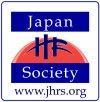by JUN KABIGTING, Chief Community Officer, The Japan HR Society and Managing Director, HR Central K.K.
"I've learned that people will forget what you said, people will forget what you did, but people will never forget how you made them feel." --- Maya Angelou, American Poet & Autobiographer
Mention employee reward and monetary compensation easily comes to mind. Why not? There is hardly anyone who does not need cash, especially these days. Even non-cash goodies such as club memberships and concert tickets do not sound bad either. This should make sense considering there are only few who are willing to render free and voluntary service.
But is employee reward simply about how much? Or shouldn’t we ask first how and who we are rewarding?
"HOW MUCH" VERSUS "WHOM" TO REWARD
In my experience, nothing beats having on board the right people whose skills and inclinations are in harmony with the organization’s culture and business goals. They are not easy to find but what they can give is well worth the time and effort. Good to Great author Jim Collins defines right people as those who not only have the passion but the ability to contribute and align with the needs and responsibilities of their organizations. Hence, it is important to first recruit the right people then reward them properly.
Job grading and salary banding are great compensation reward tools for average employees who perform satisfactorily. But if you want them to be “rockstars*,” not simply performers, you have to go beyond job grades and salary bands and go all out to attract and retain top talent. To do this, you may need to set aside internal pay equities. The world’s greatest managers, as Marcus Buckingham and Curt Coffman found, are those that treat employees as individuals. These leaders do not preoccupy themselves with addressing their people’s weaknesses but instead focus on their strengths and look for ways to measure and reward outcomes NOT activities. In other words, rather than being concerned about what to give, it makes more impact to know what the employee is expected to do, how to equip him or her to do it, and how to give praise for a job well done.
WAYS TO REWARD AND RECOGNIZE
Now, if a choice has to be made between hard cash and a combination type of compensation, it is better to opt for the latter. Money is important but not everything. Compensation and reward policies should be holistic enough to incorporate both cash and non-cash incentives including training and development opportunities.
Moreover, there may be a need to reward employees based on what they want and not on what you think is they want---different strokes for different folks. In fact, this is the rationale behind cafeteria benefits. And while it is entirely upon the company’s discretion to determine what performance merits reward, or the sort of reward to be given, be careful not to discriminate on the basis of age, gender, belief or status.
Jack Welch suggests aligning rewards with measurements. In other words, ask yourself if what you are measuring and rewarding is the outcome you want from your employees. Because we ought to measure only those we get, we can only reward what is at hand. If there is a misalignment between rewards and measurement, then that means you are getting what you are not paying for. According to Welch, people need to get differentiated rewards and recognition to be motivated. But all companies need to deliver both for retention.
There may also be a need to create a performance management culture that goes beyond annual performance reviews. This entails not just launching a broad organizational development (OD) initiative but also being sensitive to recognize a person who did a good job and informing his or her boss about the achievement.
Financial rewards can either be short term or long term. They can also be in the form of cash or equity. Short term cash benefits include base salary and on-the-spot rewards for milestones or exceptional performance. Long term rewards include profit or gain sharing. Short term equity includes restricted stock units (RSUs) and stock grants. Stock option, on the other hand, is a typical example of long term equity.
Non-cash rewards can include sabbaticals, training and development opportunities, flexible work arrangements, family support and other perks.
PACKAGING AND DELIVERY COUNTS
Adrian Gostick and Chester Elton, authors of the bestselling The Carrot Principle, say that recognition is most effective when it is positive, immediate, close, specific and shared. Recognition, in other words, must be made in front of a crowd not only to give tribute but to inspire. The event must also mention how such exceptional effort by an individual reinforces company values and business objectives.
Needless to say, valued employees reciprocate through hard work, loyalty, and results. And soon enough you will realize that achieving business goals such as growth and profitability becomes less difficult when you have employees who care.
Simply put, reward the RIGHT people RIGHT.
*Chris Ferdinandi. 2010. The best of renegade HR: 23 ideas and insights on how to become an HR rockstar. http://renegadehr.net/the-best-of-renegade-hr/ (accessed May 23, 2010).
Blog:
Other posts by The Japan HR Society:







